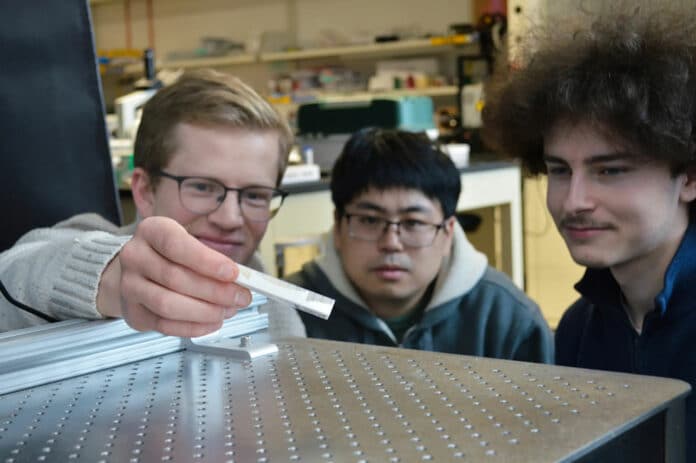Researchers from the University of Minnesota Twin Cities have discovered a new method to move objects hands-free using ultrasound waves. The research paves the way for contactless manipulation in industries such as manufacturing and robotics, where devices wouldn’t require a built-in power source in order to move.
In previous studies, it’s been demonstrated that light and sound waves can manipulate objects. But, the objects have always been smaller than the wavelength of sound or light, or on the order of millimeters to nanometers, respectively. The University of Minnesota team has developed a method that can move larger objects using the principles of metamaterial physics.
“We have known for a while that waves and light and sound can manipulate objects. What sets our research apart is that we can manipulate and trap much bigger objects if we make their surface a metamaterial surface or a ‘metasurface,'” said Ognjen Ilic, senior author of the study. “When we place these tiny patterns on the surface of the objects, we can basically reflect the sound in any direction we want. And in doing that, we can control the acoustic force that is exerted on an object.”
The technique enabled the researchers to move an object forward and also pull it toward a source. The method could prove useful for moving objects in fields like manufacturing or robotics.
“Contactless manipulation is a hot area of research in optics and electromagnetism, but this research proposes another method for contactless actuation that offers advantages that other methods may not have,” said Matthew Stein, first author of the paper and a graduate student in the University of Minnesota Department of Mechanical Engineering.
“Also, outside of the applications that this research enables, expanding upon our knowledge of physics is just a very exciting thing to do in general!”
The research team now aims to test the method with higher frequencies of waves and different materials and object sizes in the future.
“In a lot of fields of science and engineering, robotics especially, there is the need to move things, to transfer a signal into some sort of controlled motion,” Ilic said. “Often, this is done through physical tethers or having to carry some source of energy to be able to perform a task. I think we’re charting in a new direction here and showing that without physical contact, we can move objects and that motion can be controlled simply by programming what is on the surface of that object. This gives us a new mechanism to contactless actuate things.”
Journal reference:
- Matthew Stein, Sam Keller, Yujie Luo and Ognjen Ilic. Shaping contactless radiation forces through anomalous acoustic scattering. Nature Communications, 2022; DOI: 10.1038/s41467-022-34207-7
